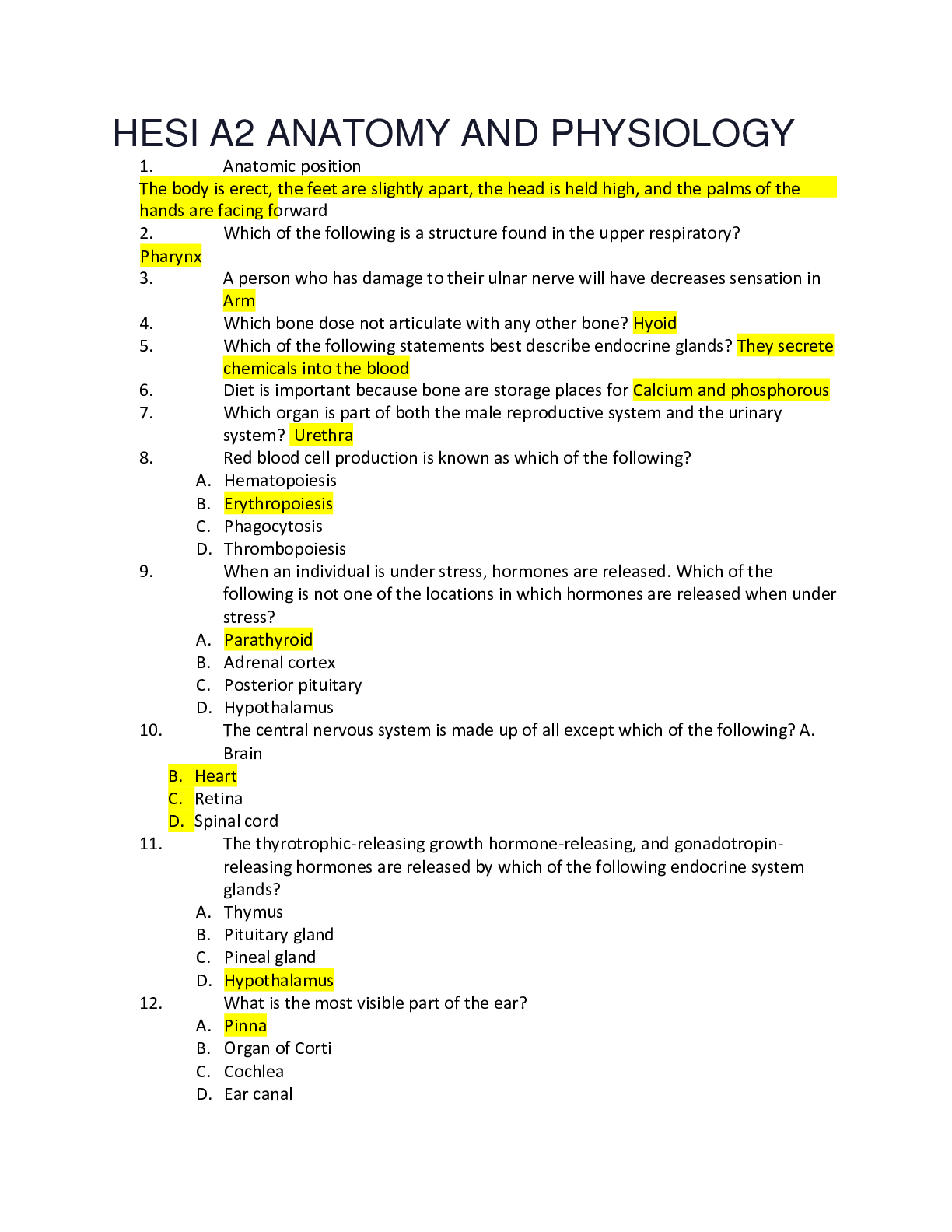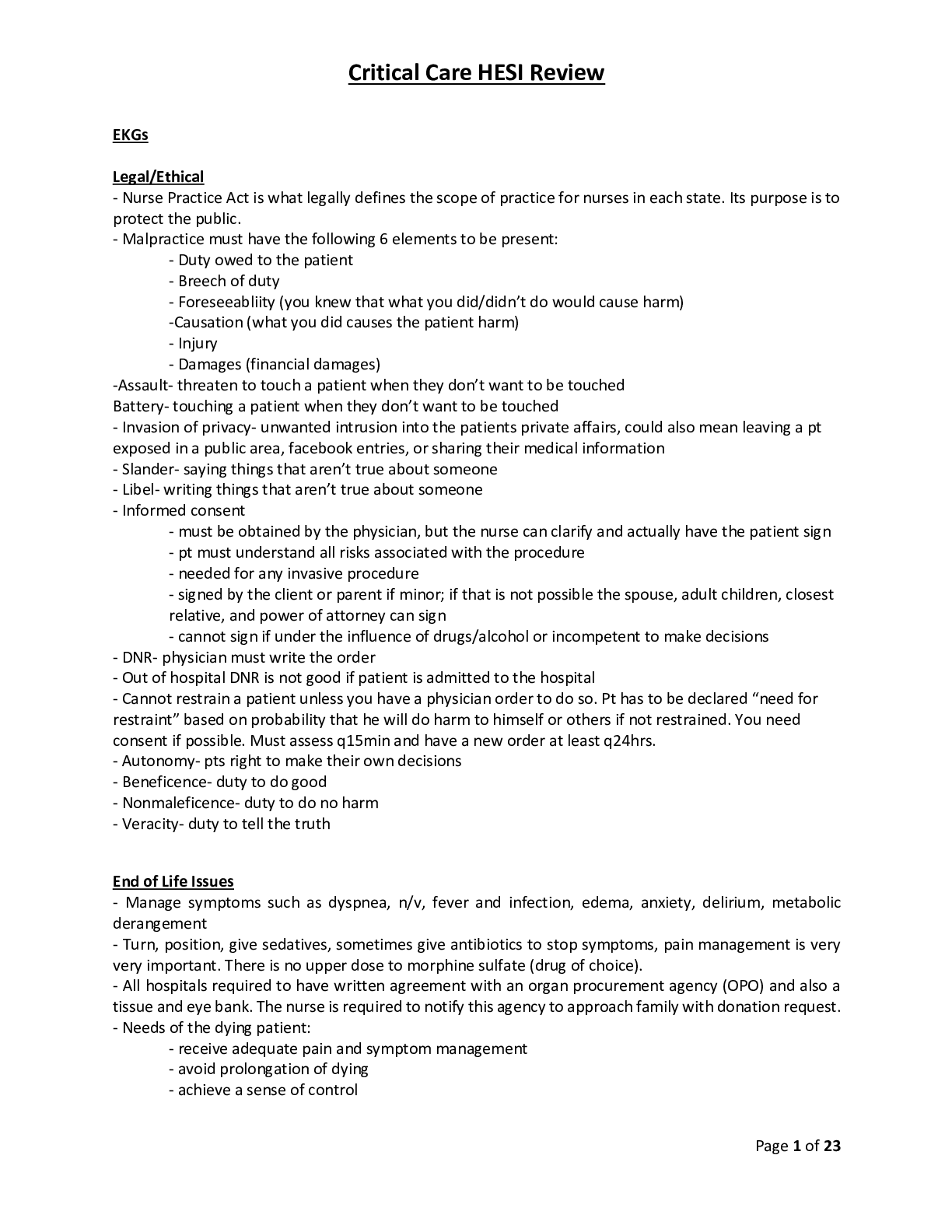Nursing Care of Children with Alterations in Perception and Coordination
Document Content and Description Below
Perception • is defined as the perception and awareness of sensory stimuli. • it is a mental act involving memory and the intellectual interpretation of new sensory data in terms of previously en... countered information. Coordination • maybe defined as “the working together of muscles to produce movement or of systems to accomplish a given process. • it implies perception of the movement or reaction that is necessary and the subsequent completion of that action via the appropriate bodily activity. The Nervous System (Overview of Anatomy and Physiology): Nerve cells or neuron – functional unit Consists of: a. CNS (Central Nervous System)– includes the brain and spinal cord and the peripheral nervous system b. PNS (Peripheral Nervous System)– includes the cranial nerves and the spinal nerves o ANS (Autonomic Nervous System)– automatically controls body functions such as breathing and heartbeat. 1. Sympathetic Nervous System (fight or flight response) 2. Parasympathetic Nervous System (rest & digest), (feed & breed) Neuron o Primary component of the nervous system; composed of cell body (gray matter), axon and dendrites. a. Axon – elongated process of fiber extending from the cell body; tansmits impulses (messages) away from the cell body to dendrites or directly to the cell bodies of another neurons; neurons usually has one axon. b. Dendrites - short, branching fibers that receive impulses and conduct them toward the nerve cell body. Neurons may have many dendrites. c. Synapse – junction between neurons where an impulse is transmitted. Neuroglia o specialized cells found only in the brain and spinal cord. a. Oligodendrocytes – produce the myelin sheath to electrically insulate neurons of the CNS b. Microglia – capable of movement and phagocytosis of pathogens and damaged tissue c. Astrocytes – support neurons, help maintain K level, contribute to the blood and brain barrier d. Ependyma – line the ventricles of the brain; many of the cells have cilia; involved in circulation of cerebrospinal fluid. Neurotransmitters o chemical agents (eg. Acetylcholine, norepinephrine) involved in the transmission of impulse [Show More]
Last updated: 1 year ago
Preview 1 out of 37 pages
Instant download

Buy this document to get the full access instantly
Instant Download Access after purchase
Add to cartInstant download
Reviews( 0 )
Document information
Connected school, study & course
About the document
Uploaded On
Apr 25, 2021
Number of pages
37
Written in
Additional information
This document has been written for:
Uploaded
Apr 25, 2021
Downloads
0
Views
132




